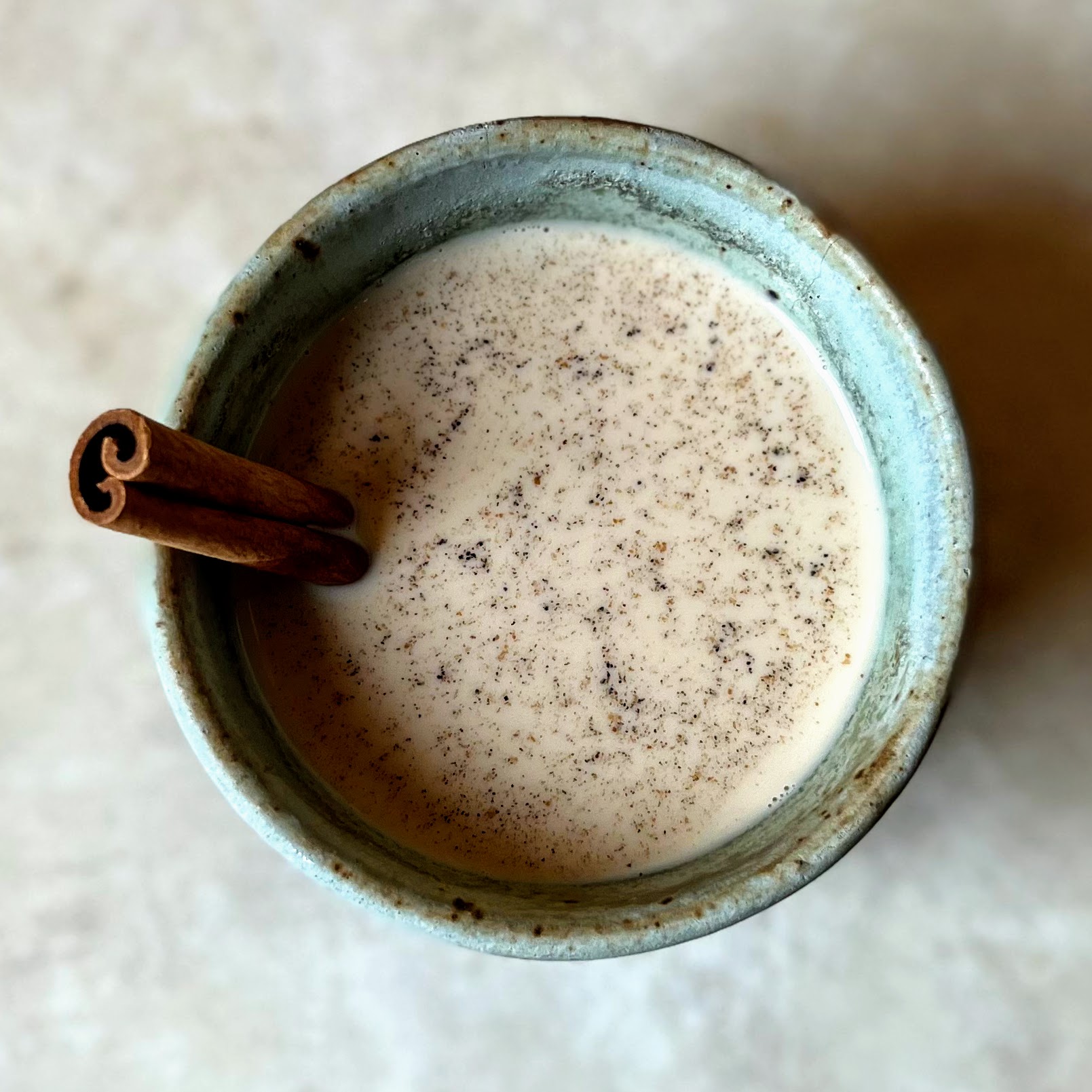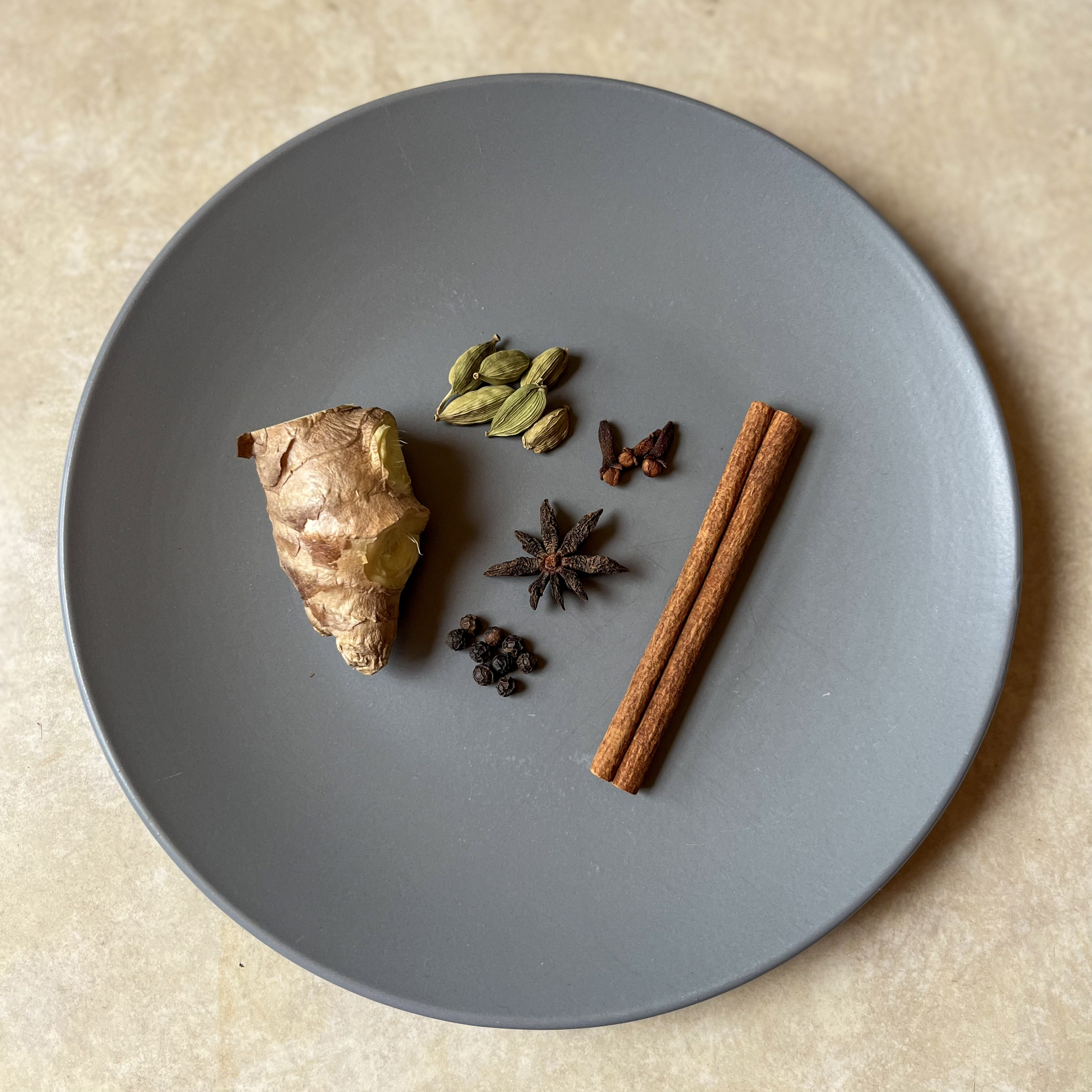Masala Chai
Pardon my dogma, but chai lattes are categorically bad. Even excellent cafes sell bad chai lattes. It’s not exactly their fault: it just isn’t feasible for a cramped cafe to keep a fresh pot of chai going. They’re often forced to pre-batch a chai concentrate (or worse, just a spiced syrup), combine that with steamed milk, and call it a drink. The one excellent chai I’ve purchased from a cafe was at The Hideout Chai Bar on the Lower East Side, where the owner uses a medley of spices in harmonious proportion. Over a low flame, he leaves the chai slowly steeping in large stockpots, and fresh cups are served to order.
The point being, it takes a lot of intention (and specialization) to make good chai in a typical cafe setting. It does not take that much effort to make excellent chai at home, and so you should do so. Here’s the version I’ve settled on, with room to choose your own spice adventure (though cardamom pods are a must!). For vegans, a creamy oat milk would be a welcome substitute for whole milk. For further variations, try sweetening your chai with an unrefined sugar (I use jaggery), or break out your milk frother to give it a creamy texture.

Recipe: Chai (makes 32oz / 1L)
Ingredients:
- 2 cups water
- 2 cups milk
- 20g (4 tbsp) loose leaf black tea (e.g. Assam), or 6-8 teabags
- 1-inch knob fresh ginger, sliced into coins
- 6 whole green cardamom pods, crushed
- 2 tbsp (30g) white sugar (add more sugar to taste, 0-2 tbsp)
- 1 pinch salt
- Optional: 2 cloves, 1 cinnamon stick, and/or 6 black peppercorns

Steps:
- Boil 2 cups of water in a kettle, then add it to a saucepan along with the ginger. Let it simmer for a few minutes.
- Microwave 2 cups of milk until it’s just simmering, then add it to the saucepan.
- Add the tea, cardamom, any other spices, 2 tbsp sugar, and a pinch salt to the pot.
- Bring everything to a boil, turn off the heat, cover the saucepan, and let it steep for 5-10 minutes.
- Strain the chai into a 1-quart measuring cup, add any additional sugar to taste, and serve.